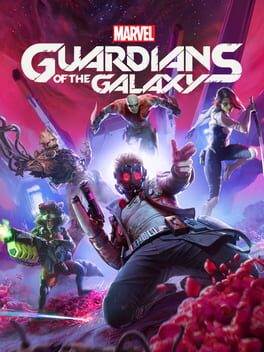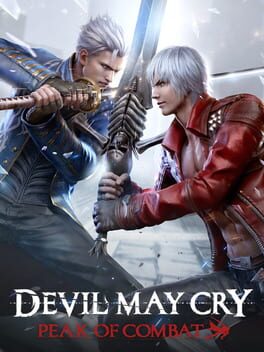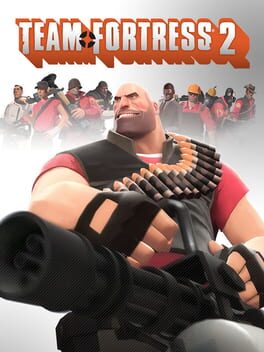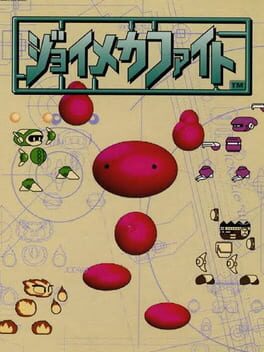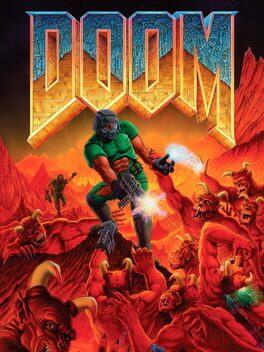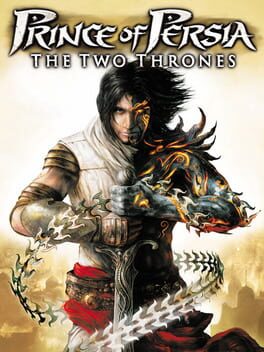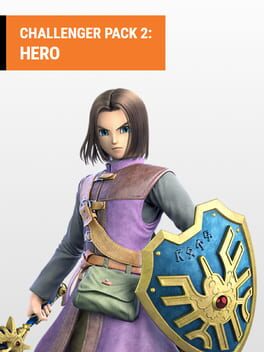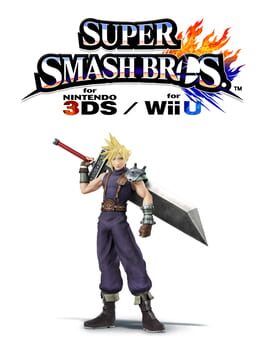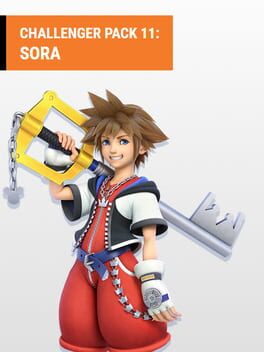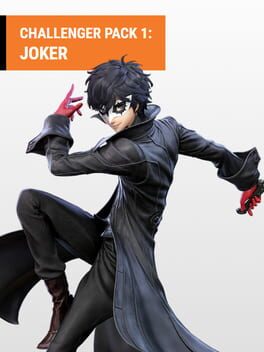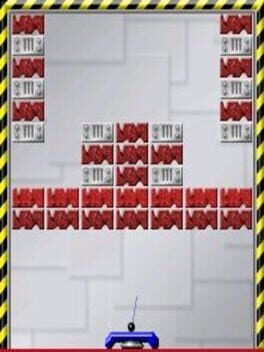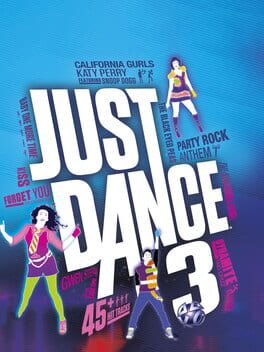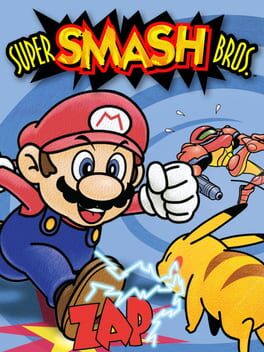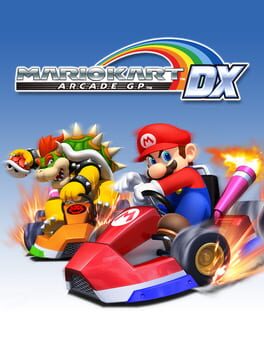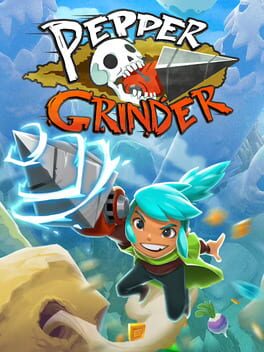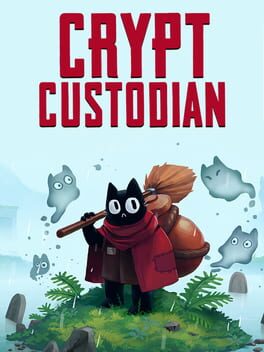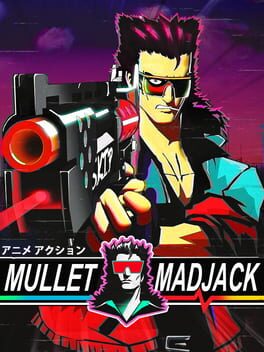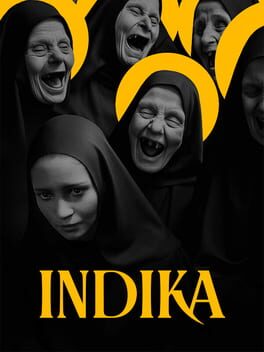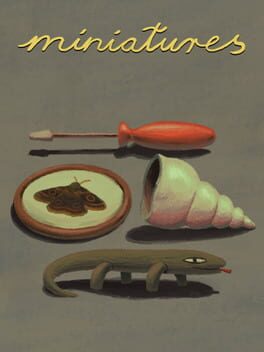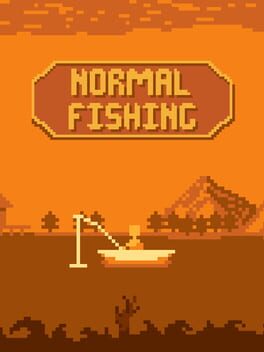IsaacAdept123456
29 reviews liked by IsaacAdept123456
Quality superhero films may be the norm these days, but in hindsight it’s strange how little we’ve gotten in the way of narratively-equivalent video games. Sure, there’s the occasionally great movie tie-in(+), but outside of the Arkham and Spider-Man series, you could count on one hand the number of solid story-driven titles out there.
It’s a shame, then, that Guardians of the Galaxy reportedly underperformed as it’s the kind of game I felt the industry really needed with regards to the comic book genre, and what makes it particularly amazing is how it manages to craft its own path whilst still staying true to the characterizations of the eponymous film. See, compared to Batman and Spider-Man, where their numerous iterations have made audiences open to new versions, Guardians is different in that most people are liable to only knowing the characters from James Gunn’s flick, and so the writers at Eidos-Montréal had a tough task before them: how do we create our own version of the team that concurrently pays homage to the comics without alienating any cinephiles?
Well, I’m not sure what their thought process entailed, but the end result was taking the core personalities personified in the movie and combining it with an original backstory, namely one in which every Guardian was a veteran of a conflict known as the Galactic War. Each member played a different role during the war, and the way such information is divulged over the course of the game goes a long way towards distinguishing its cast from their cinematic interactions. Yes, Quill is still comedic, Drax a literalist, Rocket a loudmouth, etc…etc…, but their experiences have led to them developing varied demeanors towards society as a whole. Gamora, for example, seeks some form of redemption for her support of Thanos; Rocket & Groot are purely about surviving, and Drax hunts for honor over his inability to protect his clan.
Found familyhood was cited as a major inspiration behind the tale, and I can safely say the writers successfully accomplished this task via the sheer amount of dialogue they crafted for the game. Seriously, fans of the Mass Effect or Red Dead series may find themselves in awe at the innumerable conversations typed-up for every chapter; convos that go a long way towards establishing relationships, lore, scenarios, and general camaraderie. Hearing Drax repeatedly call Gamora an assassin, seeing everyone snicker at Quill’s attempts at self-aggrandizement, or catching Rocket’s reactions to Groot’s various statements truly render the Guardians as three-dimensional people who’ve had a lot of laughs & cries along the way. No matter their disagreements, there’s a basic-level of respect amongst each peer, and while you occasionally have the option to interject with a unique response, both choices ultimately contribute to that looming amity.
I’m not exaggerating when I say GOTG has a ton of impromptu chatter -- your main hub of a ship spouts the lion’s share of these, with characters either speaking to each other out of their own volition, or engaging in ones triggered by unique items found during missions. Both moulds give-off a big Mass Effect vibe, and I was constantly amazed whenever I discerned some new interaction, whether it be petty, dramatic, or (in most cases) downright amusing.
None of this is even taking into consideration the outside convos in which characters often shout unique battle cries or make special observations should you be standing in a specific place. One of the best things GOTG does is resolve TLOU Problem I’ve had with certain narrative-driven games wherein your hero is meant to progress forward in stark contrast to the gameplay encouraging dicking around; it breaks the game’s immersion to see your next objective or companion kindly wait on you as you do whatever it is you feel like doing. By having the other Guardians actually remark on Quill’s strays off the beaten path, it goes a long way towards maintaining GOTG’s atmosphere.
In some ways, all the dialogue can get a little overwhelming, particularly for people (like myself) who suffer from FOMO: there’s a solid chance you’ll unintentionally cut-off or outright miss at least 15 percent of the optional scripting here, and that’s just something you’ll have to contend with should you wish to play the game.
Of course, no one would’ve cared about these palavers had the voice acting not been good, and that’s thankfully not the case here. Guardians of the Galaxy is interesting in that it opted for an entirely unknown cast -- I consider myself pretty well-versed in the voice acting industry, and I honestly only recognized a single name here (Andreas Apergis, and even then that was mainly because of his recurrent roles in the Assassin’s Creed franchise). That said, their unknownness doesn’t impede the project in any way as they are all terrific, embodying their characters fully as they wander amidst a full spectrum of emotions. Like I noted with the script, there was a difficult balancing act required in terms of making sure these takes on the Guardians were both similar and dissimilar from their movie counterparts, and all the actors proficiently did-so whilst rendering their characters their own. All cards on the table, I actually preferred most of these takes over the celebrityhood of James Gunn’s enterprise: Jason Cavalier grants Drax far more tragic introspective depth than Bautista ever did; Alex Weiner removes that atrocious Gilbert Gottfried inflection Cooper gave his Rocket (RIP Gottfried, but I was not a fan); and even Robert Montcalm manages to provide Groot a more-variegated personality than the one Diesel was limited to.
Given the strong vocal bounce between the characters (Rocket & Groot standing out as the best), GOTG deserves further acclamation for its robust ADR direction. See, there’s a good chance the actors did not record their lines together, and so their ability to resound like they had good chemistry owes a lot of fealty to the narrative directors for providing the appropriate context for each delivery.
There were only two voices I had issues with, the first being Jon McLaren’s Star-Lord. This may come as a surprise given that Quill is the lead protagonist and only playable character, but I did not like the inherent stoner-esque gravel McLaren provided him. Don’t get me wrong, the performance is otherwise solid; however, more often than not, I found myself thinking of a Seth Green character over a Marvel superhero.
The second is Emmanuelle Lussier-Martinez’s Mantis, though I don’t hold this against her as it’s evident the writers were going for this crazed NPC wrought with constant knowledge: the problem is, rather than do a Dr. Manhattan-type performance, they opted to portray her like Omi in that episode of Xiaolin Showdown where he gets infused with factoids from the Fountain of Hui (and yes, for the uninitiated, that’s a bad thing when done in spades).
Regardless, everyone’s performance was successfully transposed into the game via top-quality facial capture, rendering their squints and frowns through phenomenal animations. When you visibly see pain and happiness on your characters’ faces, it does a lot for the execution of the overarching story.
On that note, the narrative has its pros and cons. As I harped on earlier, the scribes do a phenomenal job developing the relationships between the Guardians: while this version of the team is already well-acquainted, it still takes place in the early part of their formation, meaning this is where you see them go from world-weary associates to the makeshift family we all know-and-love. In terms of the grand adventure you’re set out on (i.e., the campaign those interactions fall under), your mileage is going to vary. The entire game is full of heart, and there are some emotional moments that genuinely touched me to my core, but getting to those moments means engaging in standard superhero schlock wherein you’re charged with saving the universe from despair. Yes, other comic book games like Arkham Asylum and Shattered Dimensions indulged in similar premises, but I’d argue the difference is those titles were carried by their villains and a sense of mystery towards uncovering said villain’s plot. GOTG’s problem is that it’s upfront about its secrets from the get-go and, more importantly, lacks memorable antagonists: the main one, in particular, being a generic evil shroud akin to such classics as the Rising Darkness from Constantine, Galactus from Tim Story’s Fantastic 4, and Smallville’s version of Darkseid (yes, this is sarcasm). A couple of the secondary adversaries like Lady Hellbender fare a bit better, but, as they’re not a constant presence, this is a game you’ll largely be playing for the protagonists.
For the record, I had a good time with the story -- it’s well-told, has minimal pacing issues (save the end++), and would’ve worked well as an officially-published graphic novel. It’s just, post-completion, you won’t recall the majority of the chapters (the interactions within, yes, but not the events).
Thanks to James Gunn, the GOTG franchise is also permanently associated with comedy, and on that front the game works quite well. Whereas Gunn’s films were more about gags and one-liners, Eidos goes for a more situational style-of-humor wherein you’re witnessing how a coterie of charismatic individuals with sharp comportments would behave when placed in an enclosed dwelling. I wouldn’t call it laugh-out-loud, but more-so chuckle humor: you’ll smile and giggle like a schoolgirl, yet rarely twist your stomach out from hooting, and I think the tactic works great. There are times when the game tries to mimic the Gunn route; however, those scenes fall very flat and are thankfully few-and-far between(+++).
Of course, Arkham and Spider-Man didn’t get popular solely from their narratives or witticism: they had phenomenal gameplay systems to back everything up, and on that note, Guardians of the Galaxy is pretty dang good. It’s interesting that I made the comparison to Mass Effect earlier as the similarities between the two even extend to combat: you control Quill while his comrades are AI-guided, each of whom can be called upon to use a special attack against a foe or foes. Quill himself is equipped with his fists, dual blasters (primed with elemental shots obtained during set story beats), and a batch of special moves ranging from electro mines to the iconic jet boots. Much like the original Mass Effect, ammo for every tool has been replaced with a cooldown period, and there is no cover: if you’re not on the run, you’re likely to get swamped quickly (similar to Control).
With the exception of the final slot (garnered through story progression), every Guardian’s super attack has to be unlocked by way of good old-fashioned experience points gathered from combat scenarios, lending the game a bit of a lite-RPG schematic. Supplementing this are a heap of 15 additional perks players can add to Quill’s stockpile via select work benches scattered throughout most chapters, the only catch being that you have to scavenge the requisite components in the world (akin to TLOU).
Overall, fighting is fun if a bit repetitive - not every Guardian attack is practical, and their icons (save the final one) weren’t distinguished enough to avoid confusion between the useful and the useless. It also suffers from being too easy for its own good due to a number of mechanisms present even on the hardest difficulty: the option to do a one-hit KO team combo(++++) once an enemy’s health has been whittled down enough; the Huddle -- a unique feature wherein Quill can pause the skirmish, call over his team, and give everyone (including himself) an attack boost/HP recovery; and a third one I’m going to avoid stating for fear of spoilers(+++++).
Besides brawling, you’ll be conducting basic exploration involving simple puzzles that solely come down to figuring out which Guardian to employ against which obstacle. It’s a shame more wasn’t (or wasn’t able to be) done as the novel abilities specific to each alien could’ve led to some really cool environmental enigmas. In fact, part of me wonders if that was the original plan as there’s an immersive sim aspect here in the form of Quill being able to leap around and ascend most structures, only for it to not lead anywhere.
That said, the minimal scavenging didn’t bother me too much in light of how gorgeous everything is. This is one of those titles where you can tell no expense was spared, and that probably had to do with Square and Eidos’s well-intentioned belief that the GOTG IP was fertile enough for mass profit.
Well, we’ll talk about the reasons why the game faltered later, but for now, let’s at least appreciate the sheer production value on display. Guardians is interesting in that it occupies that same Jim Lee aesthetic Arkham Asylum imbibed apropos to toeing the line between photorealism and comic book poppiness (i.e., the game is liable to aging better than some of its eighth gen brethren). When it comes to the graphics, their beauty originates from three major areas: clothing, character modeling, and texture streaming.
With the first, GOTG arguably has the greatest textile work I have ever seen in a video game -- courtesy of the camera mode, I was able to zoom-in on various suits, and not a single one was shortchanged as far as detail or composition. From the individual stitches on Star-Lord’s jacket to the wear-and-tear knee creases of security guard latex to the overlapping of plate metal & linen on Gamora’s byrnie, there were so many wonderful subtleties in the wardrobe department that to list them all would drag this review out by several pages.
That same effort was continued over into the modeling, where humans and aliens alike boast pores, wrinkles, and follicles upon closer inspection. Ironically, though, it’s Groot and Rocket who deserve the most acclaim if only for the virtuosity of their respective hides: being able to glean splintered bark and singular bristles of fur on each member’s skin respectively was absolutely mind-blowing when you consider just how much easier it would’ve been to draw a single layer (what TellTale did back in 2017).
Environments maintain this quality by matching the diversity with appropriate texturization. Eidos leaned heavily on the comics and their imagination when devising the areas to throw players into, and while some of them are admittedly a bit standard (the red deserts of Lamentis; the frostbitten scape of Maklua IV), the majority do take you to some pretty sweet locales ripe with filled-in gubbins and walling. The golden-lacquered Sacrosanct and magenta-strewn matter of the Quarantine Zone are predisposed to being fan favorites, but for my own tea I personally adored the cyberpunk vibes of Knowhere where sleaze, soft lighting, neon signs, and lite-smog blended together into an evocative site.
My last major bastion of praise goes towards the personalization facets, and not in the usual sense of the term. In the past, I’ve praised devs for crafting unique spaces you could tell were tenanted by a standalone persona -- what GOTG has done is take that template and extrapolate it for the mainline species here. Heading into a Kree ship, for instance, gifts you a shelf of books with Kree rune titles, clean pipes with the Nova Corp insignia, and a general sense of orderliness. Compare this to Lady Hellbender’s gladiatorial planet, chockful of broken glass, spilled beer, and cobbled food. As you explore alien terrain, you really get a sense of prior lives and civilizations that mysteriously vanished over the course of evolution, leaving behind such remnants as hulking monoliths, structures, and carvings. It’s all superbly done.
Other miscellaneous graphical feats include unique lunge animations for each Guardian when jumping gaps, cold air breaths in subzero climates, natural finger movements when rotating examinable objects, Quill putting his hands up when approaching fiery pits, reflective surfaces from puddles, gold tiling, and tiny mirrors; the pose algorithm during 1-on-1 counsels being very organic (compared to Valhalla’s constant arm-crossing), character subtitle names boasting different colors, how Quill turns his head towards the current speaker, and, most vivid of all, the entirety of Kosmo -- this is a psychic dog you’ll infrequently run into during the course of the game, and I have to imagine someone at Eidos either grew up with golden retrievers or put mo-cap dots around a real one as, as any dog owner will tell you, everything about his canine behavior was pitch perfect: the constantly darting stare, twirling of his tale, twitching of his eyebrows, the effervescent panting -- for all his ESP, he may ironically go down as the most accurate dog in video game history.
I did have some complaints, but they concerned relatively minor stuff like the lack of footprints on powdery exteriors, Groots root bridges clipping the ground, and Quill occasionally acting jittery during dialogues.
SFX, unfortunately, was the sole area undercompensated by the devs in that it’s inconsistent to a trained ear. For starters, not much went in the way of footstep differentiation, with ice & metallic platforms, and beds & tile floors bearing the same din as their paired twin. There were times where I’d hear the crunch of snow pellets on surfaces they were minimally scattered on, while the bulk of each Guardian’s abilities (save Quill’s) were sonorously indistinguishable. Effort did go into individuating every team member’s movements, and jumps did come programmed with that distinctiveness I sought; however, it was otherwise rather basic for a game of this caliber. Don’t get me wrong, nothing’s distracting, you just won’t be immersed in any planet’s auralscape.
Finally, the OST by Richard Jacques (which, by the way, was much harder to find than it should have been courtesy of Eidos opting to promote the licensed mixtape instead) is solid, if a little derivative. Let me explain so I don’t come off as pretentious or condescending: ever since Alan Silvestri pioneered that massive symphonic sound in The Avengers, a lot of Marvel-based composers have incorporated aspects of that into their scores. It’s certainly a wise decision with regards to maintaining a familiarity to audiences, but it does come at the cost of that uniqueness we used to get in superhero music pre-Avengers. As a result, you’ll hear a lot of recognizable motifs despite the soundtrack being its own set of arrangements -- I’m talking electric guitar riffs, Greek-inspired choral harmonies, pounding brass, and crescendos galore. Thankfully, Jacques does give us one of the best comic book themes to come out in a while; however, in respect to the rest of his compositions, they’re good at the expense of not rising to that same level of memorability.
Per my earlier remark, Eidos spent a lot of money licensing popular 80s hits that you can either manually play on the ship or randomly hear during those aforestated Huddles. I know there have been, and will be, a lot of people who enjoy the substance, but part of me wonders whether or not it was a good idea. As I keep harping on, GOTG was clearly an expensive game to make, and considering how little you’ll hear the music (being off-ship/infrequently using Huddles), it begs the question of how much money could’ve been saved instead by hiring a band to create 80s-inspired tunes.
Then again, maybe it wouldn’t have helped much considering most critics blame the poor reception of the Avengers game for GOTG’s financial disappointment. It’s a tragically valid connection, and combined with the game not releasing adjacent to any of the mainline movies, it sadly wasn’t able to stand on its own. Zack Snyder got a lot of sh!t for his flavor of the week comment years ago, but the fact of the matter is he was right to an extent: certain characters only achieved profitability because they were specific versions crafted in the Marvel Cinematic Universe. Outside of that ecosystem, it was always going to be a struggle for any hero not named Batman, Spider-Man, or Wolverine to succeed.
It’s been almost three years since GOTG released, and with no signs of a sequel, we have to accept the game for the unique specimen it was. It’s rare we get superhero games of this quality, and will be even rarer as the MCU goes through a post-Bubble period, but let it be known that, for all my complaints, this was an exquisite product well-worth your money.
NOTES
-Before addressing anything else, I should mention that there is a choice system in the game, but it’s more akin to the first Witcher or Deus Ex wherein it impacts the flow of events rather than causing multiple endings. When it involved hard gameplay, I was fine with it; however, there was an instance in one of the story climaxes where it ruined the moment (you’ll know it when you see it).
+Spider-Man 2, X-Men Origins: Wolverine, Batman Begins, and, heck, I actually liked the Iron Man one.
++Without spoiling, basically it indulges in the cliche fake-out tactic that’s been overdone by this point. You don’t even get a proper end boss, though not that it would’ve mattered as the boss fights here are mediocre: not Arkham Asylum bad, but arguably lower than Insomniac’s first Spider-Man.
+++The worst involves a scene where Quill has to do improvised karaoke (trust me, you’ll know it when you see it).
++++The finishers themselves aren’t that exciting, being a series of hard cuts of each Guardian doing an attack on the target. A little strange considering standard melee combos often result in your Alien brethren actually conducting a coordinated strike alongside Quill.
+++++All I’ll say is it involves Groot’s final unlockable power, its essence simultaneously diminishing a certain “emotional” story beat.
-Similar to Metroid Prime, Quill’s visor enables him to examine enemies and environs for pieces of supplemental data, but the game unfortunately doesn’t pause background conversations for the latter, meaning you’re forced to read them quickly lest you get interrupted.
-The writers created their own profanity for the characters to gleefully indulge in.
-Why does Mantis have Hela’s garb?
-Tell me Gamora’s VA doesn’t sound like Leela from Futurama?
-There’s a glowing red digital billboard in Knowhere that displays ads for a McDonald’s rip-off. I bring this up because I actually saw a similar hoarding in Shinjuku albeit for a Wendy’s, making me wonder if it was inspired by that?
It’s a shame, then, that Guardians of the Galaxy reportedly underperformed as it’s the kind of game I felt the industry really needed with regards to the comic book genre, and what makes it particularly amazing is how it manages to craft its own path whilst still staying true to the characterizations of the eponymous film. See, compared to Batman and Spider-Man, where their numerous iterations have made audiences open to new versions, Guardians is different in that most people are liable to only knowing the characters from James Gunn’s flick, and so the writers at Eidos-Montréal had a tough task before them: how do we create our own version of the team that concurrently pays homage to the comics without alienating any cinephiles?
Well, I’m not sure what their thought process entailed, but the end result was taking the core personalities personified in the movie and combining it with an original backstory, namely one in which every Guardian was a veteran of a conflict known as the Galactic War. Each member played a different role during the war, and the way such information is divulged over the course of the game goes a long way towards distinguishing its cast from their cinematic interactions. Yes, Quill is still comedic, Drax a literalist, Rocket a loudmouth, etc…etc…, but their experiences have led to them developing varied demeanors towards society as a whole. Gamora, for example, seeks some form of redemption for her support of Thanos; Rocket & Groot are purely about surviving, and Drax hunts for honor over his inability to protect his clan.
Found familyhood was cited as a major inspiration behind the tale, and I can safely say the writers successfully accomplished this task via the sheer amount of dialogue they crafted for the game. Seriously, fans of the Mass Effect or Red Dead series may find themselves in awe at the innumerable conversations typed-up for every chapter; convos that go a long way towards establishing relationships, lore, scenarios, and general camaraderie. Hearing Drax repeatedly call Gamora an assassin, seeing everyone snicker at Quill’s attempts at self-aggrandizement, or catching Rocket’s reactions to Groot’s various statements truly render the Guardians as three-dimensional people who’ve had a lot of laughs & cries along the way. No matter their disagreements, there’s a basic-level of respect amongst each peer, and while you occasionally have the option to interject with a unique response, both choices ultimately contribute to that looming amity.
I’m not exaggerating when I say GOTG has a ton of impromptu chatter -- your main hub of a ship spouts the lion’s share of these, with characters either speaking to each other out of their own volition, or engaging in ones triggered by unique items found during missions. Both moulds give-off a big Mass Effect vibe, and I was constantly amazed whenever I discerned some new interaction, whether it be petty, dramatic, or (in most cases) downright amusing.
None of this is even taking into consideration the outside convos in which characters often shout unique battle cries or make special observations should you be standing in a specific place. One of the best things GOTG does is resolve TLOU Problem I’ve had with certain narrative-driven games wherein your hero is meant to progress forward in stark contrast to the gameplay encouraging dicking around; it breaks the game’s immersion to see your next objective or companion kindly wait on you as you do whatever it is you feel like doing. By having the other Guardians actually remark on Quill’s strays off the beaten path, it goes a long way towards maintaining GOTG’s atmosphere.
In some ways, all the dialogue can get a little overwhelming, particularly for people (like myself) who suffer from FOMO: there’s a solid chance you’ll unintentionally cut-off or outright miss at least 15 percent of the optional scripting here, and that’s just something you’ll have to contend with should you wish to play the game.
Of course, no one would’ve cared about these palavers had the voice acting not been good, and that’s thankfully not the case here. Guardians of the Galaxy is interesting in that it opted for an entirely unknown cast -- I consider myself pretty well-versed in the voice acting industry, and I honestly only recognized a single name here (Andreas Apergis, and even then that was mainly because of his recurrent roles in the Assassin’s Creed franchise). That said, their unknownness doesn’t impede the project in any way as they are all terrific, embodying their characters fully as they wander amidst a full spectrum of emotions. Like I noted with the script, there was a difficult balancing act required in terms of making sure these takes on the Guardians were both similar and dissimilar from their movie counterparts, and all the actors proficiently did-so whilst rendering their characters their own. All cards on the table, I actually preferred most of these takes over the celebrityhood of James Gunn’s enterprise: Jason Cavalier grants Drax far more tragic introspective depth than Bautista ever did; Alex Weiner removes that atrocious Gilbert Gottfried inflection Cooper gave his Rocket (RIP Gottfried, but I was not a fan); and even Robert Montcalm manages to provide Groot a more-variegated personality than the one Diesel was limited to.
Given the strong vocal bounce between the characters (Rocket & Groot standing out as the best), GOTG deserves further acclamation for its robust ADR direction. See, there’s a good chance the actors did not record their lines together, and so their ability to resound like they had good chemistry owes a lot of fealty to the narrative directors for providing the appropriate context for each delivery.
There were only two voices I had issues with, the first being Jon McLaren’s Star-Lord. This may come as a surprise given that Quill is the lead protagonist and only playable character, but I did not like the inherent stoner-esque gravel McLaren provided him. Don’t get me wrong, the performance is otherwise solid; however, more often than not, I found myself thinking of a Seth Green character over a Marvel superhero.
The second is Emmanuelle Lussier-Martinez’s Mantis, though I don’t hold this against her as it’s evident the writers were going for this crazed NPC wrought with constant knowledge: the problem is, rather than do a Dr. Manhattan-type performance, they opted to portray her like Omi in that episode of Xiaolin Showdown where he gets infused with factoids from the Fountain of Hui (and yes, for the uninitiated, that’s a bad thing when done in spades).
Regardless, everyone’s performance was successfully transposed into the game via top-quality facial capture, rendering their squints and frowns through phenomenal animations. When you visibly see pain and happiness on your characters’ faces, it does a lot for the execution of the overarching story.
On that note, the narrative has its pros and cons. As I harped on earlier, the scribes do a phenomenal job developing the relationships between the Guardians: while this version of the team is already well-acquainted, it still takes place in the early part of their formation, meaning this is where you see them go from world-weary associates to the makeshift family we all know-and-love. In terms of the grand adventure you’re set out on (i.e., the campaign those interactions fall under), your mileage is going to vary. The entire game is full of heart, and there are some emotional moments that genuinely touched me to my core, but getting to those moments means engaging in standard superhero schlock wherein you’re charged with saving the universe from despair. Yes, other comic book games like Arkham Asylum and Shattered Dimensions indulged in similar premises, but I’d argue the difference is those titles were carried by their villains and a sense of mystery towards uncovering said villain’s plot. GOTG’s problem is that it’s upfront about its secrets from the get-go and, more importantly, lacks memorable antagonists: the main one, in particular, being a generic evil shroud akin to such classics as the Rising Darkness from Constantine, Galactus from Tim Story’s Fantastic 4, and Smallville’s version of Darkseid (yes, this is sarcasm). A couple of the secondary adversaries like Lady Hellbender fare a bit better, but, as they’re not a constant presence, this is a game you’ll largely be playing for the protagonists.
For the record, I had a good time with the story -- it’s well-told, has minimal pacing issues (save the end++), and would’ve worked well as an officially-published graphic novel. It’s just, post-completion, you won’t recall the majority of the chapters (the interactions within, yes, but not the events).
Thanks to James Gunn, the GOTG franchise is also permanently associated with comedy, and on that front the game works quite well. Whereas Gunn’s films were more about gags and one-liners, Eidos goes for a more situational style-of-humor wherein you’re witnessing how a coterie of charismatic individuals with sharp comportments would behave when placed in an enclosed dwelling. I wouldn’t call it laugh-out-loud, but more-so chuckle humor: you’ll smile and giggle like a schoolgirl, yet rarely twist your stomach out from hooting, and I think the tactic works great. There are times when the game tries to mimic the Gunn route; however, those scenes fall very flat and are thankfully few-and-far between(+++).
Of course, Arkham and Spider-Man didn’t get popular solely from their narratives or witticism: they had phenomenal gameplay systems to back everything up, and on that note, Guardians of the Galaxy is pretty dang good. It’s interesting that I made the comparison to Mass Effect earlier as the similarities between the two even extend to combat: you control Quill while his comrades are AI-guided, each of whom can be called upon to use a special attack against a foe or foes. Quill himself is equipped with his fists, dual blasters (primed with elemental shots obtained during set story beats), and a batch of special moves ranging from electro mines to the iconic jet boots. Much like the original Mass Effect, ammo for every tool has been replaced with a cooldown period, and there is no cover: if you’re not on the run, you’re likely to get swamped quickly (similar to Control).
With the exception of the final slot (garnered through story progression), every Guardian’s super attack has to be unlocked by way of good old-fashioned experience points gathered from combat scenarios, lending the game a bit of a lite-RPG schematic. Supplementing this are a heap of 15 additional perks players can add to Quill’s stockpile via select work benches scattered throughout most chapters, the only catch being that you have to scavenge the requisite components in the world (akin to TLOU).
Overall, fighting is fun if a bit repetitive - not every Guardian attack is practical, and their icons (save the final one) weren’t distinguished enough to avoid confusion between the useful and the useless. It also suffers from being too easy for its own good due to a number of mechanisms present even on the hardest difficulty: the option to do a one-hit KO team combo(++++) once an enemy’s health has been whittled down enough; the Huddle -- a unique feature wherein Quill can pause the skirmish, call over his team, and give everyone (including himself) an attack boost/HP recovery; and a third one I’m going to avoid stating for fear of spoilers(+++++).
Besides brawling, you’ll be conducting basic exploration involving simple puzzles that solely come down to figuring out which Guardian to employ against which obstacle. It’s a shame more wasn’t (or wasn’t able to be) done as the novel abilities specific to each alien could’ve led to some really cool environmental enigmas. In fact, part of me wonders if that was the original plan as there’s an immersive sim aspect here in the form of Quill being able to leap around and ascend most structures, only for it to not lead anywhere.
That said, the minimal scavenging didn’t bother me too much in light of how gorgeous everything is. This is one of those titles where you can tell no expense was spared, and that probably had to do with Square and Eidos’s well-intentioned belief that the GOTG IP was fertile enough for mass profit.
Well, we’ll talk about the reasons why the game faltered later, but for now, let’s at least appreciate the sheer production value on display. Guardians is interesting in that it occupies that same Jim Lee aesthetic Arkham Asylum imbibed apropos to toeing the line between photorealism and comic book poppiness (i.e., the game is liable to aging better than some of its eighth gen brethren). When it comes to the graphics, their beauty originates from three major areas: clothing, character modeling, and texture streaming.
With the first, GOTG arguably has the greatest textile work I have ever seen in a video game -- courtesy of the camera mode, I was able to zoom-in on various suits, and not a single one was shortchanged as far as detail or composition. From the individual stitches on Star-Lord’s jacket to the wear-and-tear knee creases of security guard latex to the overlapping of plate metal & linen on Gamora’s byrnie, there were so many wonderful subtleties in the wardrobe department that to list them all would drag this review out by several pages.
That same effort was continued over into the modeling, where humans and aliens alike boast pores, wrinkles, and follicles upon closer inspection. Ironically, though, it’s Groot and Rocket who deserve the most acclaim if only for the virtuosity of their respective hides: being able to glean splintered bark and singular bristles of fur on each member’s skin respectively was absolutely mind-blowing when you consider just how much easier it would’ve been to draw a single layer (what TellTale did back in 2017).
Environments maintain this quality by matching the diversity with appropriate texturization. Eidos leaned heavily on the comics and their imagination when devising the areas to throw players into, and while some of them are admittedly a bit standard (the red deserts of Lamentis; the frostbitten scape of Maklua IV), the majority do take you to some pretty sweet locales ripe with filled-in gubbins and walling. The golden-lacquered Sacrosanct and magenta-strewn matter of the Quarantine Zone are predisposed to being fan favorites, but for my own tea I personally adored the cyberpunk vibes of Knowhere where sleaze, soft lighting, neon signs, and lite-smog blended together into an evocative site.
My last major bastion of praise goes towards the personalization facets, and not in the usual sense of the term. In the past, I’ve praised devs for crafting unique spaces you could tell were tenanted by a standalone persona -- what GOTG has done is take that template and extrapolate it for the mainline species here. Heading into a Kree ship, for instance, gifts you a shelf of books with Kree rune titles, clean pipes with the Nova Corp insignia, and a general sense of orderliness. Compare this to Lady Hellbender’s gladiatorial planet, chockful of broken glass, spilled beer, and cobbled food. As you explore alien terrain, you really get a sense of prior lives and civilizations that mysteriously vanished over the course of evolution, leaving behind such remnants as hulking monoliths, structures, and carvings. It’s all superbly done.
Other miscellaneous graphical feats include unique lunge animations for each Guardian when jumping gaps, cold air breaths in subzero climates, natural finger movements when rotating examinable objects, Quill putting his hands up when approaching fiery pits, reflective surfaces from puddles, gold tiling, and tiny mirrors; the pose algorithm during 1-on-1 counsels being very organic (compared to Valhalla’s constant arm-crossing), character subtitle names boasting different colors, how Quill turns his head towards the current speaker, and, most vivid of all, the entirety of Kosmo -- this is a psychic dog you’ll infrequently run into during the course of the game, and I have to imagine someone at Eidos either grew up with golden retrievers or put mo-cap dots around a real one as, as any dog owner will tell you, everything about his canine behavior was pitch perfect: the constantly darting stare, twirling of his tale, twitching of his eyebrows, the effervescent panting -- for all his ESP, he may ironically go down as the most accurate dog in video game history.
I did have some complaints, but they concerned relatively minor stuff like the lack of footprints on powdery exteriors, Groots root bridges clipping the ground, and Quill occasionally acting jittery during dialogues.
SFX, unfortunately, was the sole area undercompensated by the devs in that it’s inconsistent to a trained ear. For starters, not much went in the way of footstep differentiation, with ice & metallic platforms, and beds & tile floors bearing the same din as their paired twin. There were times where I’d hear the crunch of snow pellets on surfaces they were minimally scattered on, while the bulk of each Guardian’s abilities (save Quill’s) were sonorously indistinguishable. Effort did go into individuating every team member’s movements, and jumps did come programmed with that distinctiveness I sought; however, it was otherwise rather basic for a game of this caliber. Don’t get me wrong, nothing’s distracting, you just won’t be immersed in any planet’s auralscape.
Finally, the OST by Richard Jacques (which, by the way, was much harder to find than it should have been courtesy of Eidos opting to promote the licensed mixtape instead) is solid, if a little derivative. Let me explain so I don’t come off as pretentious or condescending: ever since Alan Silvestri pioneered that massive symphonic sound in The Avengers, a lot of Marvel-based composers have incorporated aspects of that into their scores. It’s certainly a wise decision with regards to maintaining a familiarity to audiences, but it does come at the cost of that uniqueness we used to get in superhero music pre-Avengers. As a result, you’ll hear a lot of recognizable motifs despite the soundtrack being its own set of arrangements -- I’m talking electric guitar riffs, Greek-inspired choral harmonies, pounding brass, and crescendos galore. Thankfully, Jacques does give us one of the best comic book themes to come out in a while; however, in respect to the rest of his compositions, they’re good at the expense of not rising to that same level of memorability.
Per my earlier remark, Eidos spent a lot of money licensing popular 80s hits that you can either manually play on the ship or randomly hear during those aforestated Huddles. I know there have been, and will be, a lot of people who enjoy the substance, but part of me wonders whether or not it was a good idea. As I keep harping on, GOTG was clearly an expensive game to make, and considering how little you’ll hear the music (being off-ship/infrequently using Huddles), it begs the question of how much money could’ve been saved instead by hiring a band to create 80s-inspired tunes.
Then again, maybe it wouldn’t have helped much considering most critics blame the poor reception of the Avengers game for GOTG’s financial disappointment. It’s a tragically valid connection, and combined with the game not releasing adjacent to any of the mainline movies, it sadly wasn’t able to stand on its own. Zack Snyder got a lot of sh!t for his flavor of the week comment years ago, but the fact of the matter is he was right to an extent: certain characters only achieved profitability because they were specific versions crafted in the Marvel Cinematic Universe. Outside of that ecosystem, it was always going to be a struggle for any hero not named Batman, Spider-Man, or Wolverine to succeed.
It’s been almost three years since GOTG released, and with no signs of a sequel, we have to accept the game for the unique specimen it was. It’s rare we get superhero games of this quality, and will be even rarer as the MCU goes through a post-Bubble period, but let it be known that, for all my complaints, this was an exquisite product well-worth your money.
NOTES
-Before addressing anything else, I should mention that there is a choice system in the game, but it’s more akin to the first Witcher or Deus Ex wherein it impacts the flow of events rather than causing multiple endings. When it involved hard gameplay, I was fine with it; however, there was an instance in one of the story climaxes where it ruined the moment (you’ll know it when you see it).
+Spider-Man 2, X-Men Origins: Wolverine, Batman Begins, and, heck, I actually liked the Iron Man one.
++Without spoiling, basically it indulges in the cliche fake-out tactic that’s been overdone by this point. You don’t even get a proper end boss, though not that it would’ve mattered as the boss fights here are mediocre: not Arkham Asylum bad, but arguably lower than Insomniac’s first Spider-Man.
+++The worst involves a scene where Quill has to do improvised karaoke (trust me, you’ll know it when you see it).
++++The finishers themselves aren’t that exciting, being a series of hard cuts of each Guardian doing an attack on the target. A little strange considering standard melee combos often result in your Alien brethren actually conducting a coordinated strike alongside Quill.
+++++All I’ll say is it involves Groot’s final unlockable power, its essence simultaneously diminishing a certain “emotional” story beat.
-Similar to Metroid Prime, Quill’s visor enables him to examine enemies and environs for pieces of supplemental data, but the game unfortunately doesn’t pause background conversations for the latter, meaning you’re forced to read them quickly lest you get interrupted.
-The writers created their own profanity for the characters to gleefully indulge in.
-Why does Mantis have Hela’s garb?
-Tell me Gamora’s VA doesn’t sound like Leela from Futurama?
-There’s a glowing red digital billboard in Knowhere that displays ads for a McDonald’s rip-off. I bring this up because I actually saw a similar hoarding in Shinjuku albeit for a Wendy’s, making me wonder if it was inspired by that?
Team Fortress 2
2007
Pizza Tower
2023
Super Mario Sunshine
2002
i struggled with the controls for maybe an hour or so before deciding to calm down and stop pretending its worth my time. i sat and thought, what was i doing this for? what am i, a masochist? did i have nothing better to do? what was i proving to myself? no, i dont have to suffer through this. i am in control of my own destiny. goodbye
Joy Mech Fight
1993
Doom
2019
This review contains spoilers
I had such a great time with Tears of the Kingdom ❤
The new mechanics introduced in that game are so crazy that you feel like they're going to be game-breaking when you unlock them for the first time!
The Ultrahand added so much depth to the gameplay. I was already blown away by the different puzzles & game design in BOTW, especially inside the shrines. But this is on another level here.
You can do basically ANYTHING. So much freedom in the way you approach puzzles.
The way I was solving the shrines often made me laugh. For many of those, I could definitely tell I wasn't doing what the developers intended.
I tried as much as possible to take advantage of all the game mechanics offered by the game. I used Ultrahand and the Zonai devices everytime I saw an occasion to travel faster using vehicles. Surfing on my shield is also extremely satisfying, it never stopped being fun.
After I finished Breath of the Wild, I regretted not using the abilities at my disposal as much as I should have, so I'm glad I set things right in TOTK.
What I liked about the fuse ability is that it made beating stronger enemies really worthwhile, as you can use their materials to make stronger & more durable weapons.
I wasn't a fan of the weapon durability system in BOTW, but this new feature made me completely forget about it !
The game has so many movement features that it felt like I could go literally anywhere at anytime. I could always use the Travel Medallion, Paraglider, Tulin's vow, the rockets, the springs or the wings to reach far away places. If you thought BOTW had a lot of movement options, they went above and beyond with TOTK !
What's cool is that you don't even feel like doing all the shrines you see to unlock more teleporters, because you can already travel anywhere very quickly.
This time, I didn't make the mistake that I made in BOTW: trying to do as many side content as possible, trying to get all the Koroks, Shrines & Side quests at all costs.
Instead, I simply focused on the main story, and I only did a little bit of side content, but not too much. I got rid of that completionism itch 😅
I enjoyed the recurring missions, like the ones where I had to prevent the Hudson signs from falling off; escorting the musical troupe in front of the great fairies so they can perform their song; joining the monster-control-squad to defeat several Monster Forces; investigating with Penn at all the Stables, etc...
The ascent of Wind Temple was pretty epic with the music and the jumps on the ships to reach the top of the cyclone.
Colgera was an amazing first Boss. I wish the fight wasn't so easy tho, because everything else about this Boss is great.
The fact that you fight him while being high up in the air, maneuvering with your Paraglider, surrounded by tornados, and having to hit its weak spots using the bow in slow-motion. Idk, it just felt freaking epic.
The reason that fight was so easy is because of Bullet time, this mechanic is absolutely broken. It slows time tremendously, and it lasts forever. This really trivialized this Boss fight... I used this mechanic as little as possible for the rest of the game.
Vow of Tulin proved to be very useful during the rest of the game, whether it's his wind power, or the fact that he was actively participating to all my battles. He has perfect aim and dealt good amount of damages to enemies. All the sages proved to be very useful in battle. The sage abilities aren't as fun as the Champions abilities in BOTW tho.
It was fulfilling to help every race while progressing in the main story. First, I helped the Ritos getting rid of the blizzard in their region; then I managed to free the Gorons from their spell; after that I stopped the sandstorm in Gerudo Town; and finally I got rid of the Black Sludge in Zora's Domain.
The mini Bosses were really exciting to fight. It felt rewarding to beat my first Battle Talus in early-game. Having to use the Ultrahand & Recall abilities to defeat the Flux Constructs was also hella fun. Same when defeating Master Kohga in the Depths, and other minor Bosses like Frox & Lynels.
It was also nice to rematch the major Bosses in the Depths (Colgera, Marbled Gohma, Mucktorok & Queen Gibdo)
About the side content, there are still those Korok seeds to find throughout all of Hyrule, and there are even more this time around: 1000 instead of 900 !
Even though I ignored them most of the time, I have to admit the few I did were really enjoyable to get. I precisely remember an instance where I had to build a boat and bring the Korok on the other side of a lake. This was extremely cool! And there were other instances where I could build devices to propel the Koroks directly towards their friend using rockets.
Building a vehicle and seeing it work as intended is one of the most satisfying aspects of TOTK !
Moragia was another freaking epic Boss. You have to fly a plane and shoot Yunobo directly at each one of the Bosses heads. The ingenuity with all those Bosses mechanics is just crazy.
The Boss of Fire Temple, Marbled Gohma, was just as good as Colgera. It's impressive how consistently great the Bosses are!
Same thing again with Lightning Temple, Queen Gibdo being extremely fun to fight, and one of the most challenging Bosses in the game.
I was very happy with the Temples overall. They don't have the huge scope of the dungeons in previous Zelda games, where it can take up to 2 or 3 hours to complete one single dungeon.
But the puzzles you'll find in those Temples are high quality regardless. It's just less stuffed with content, and shorter.
In games like BOTW and TOTK, having less time-consuming Temples doesn't bother me at all, considering the amount of content these games already have outside the dungeons.
And I have to say the Bosses of these dungeons were absolutely amazing, much MUCH better than the Blight Ganons inside BOTW's Divine Beasts.
I just wish some of the Bosses offered more challenge.
It felt so good teaming up with the 4 sages to beat up all the enemies on our path inside Hyrule Castle.
You feel so powerful at this stage of the game! I was able to fuse a shit ton of weapons with all the monster materials I got on my way. I was running out of weapons before exploring the castle, and after that, I had over a dozen of weapons with +60 or +70 attack damage.
The game-design never ceased to amaze me... The 5th dungeon where you have to fight the hordes of enemies & the Seized Construct Boss using Mineru's own Construct was fire.
The cutscene we see at the end of this dungeon has to be one of the best moments in the game: "Years from now, someone will appear with the sword that seals the darkness. A swordman with the power to defeat you, Link. Remember this name.." That was amazing!
And a few moments later, we are able to recover the Master Sword in a beautiful scene on the Light Dragon's head.
The Final fight was definitely a lot more fun than Dark Beast Ganon in BOTW. The swordfight was actually quite challenging, it took me a few tries to get the timing right on the parry & dodge.
The last face off between Demon Dragon Ganon and Light Dragon Zelda was majestic.
In the end, I'd say I had more fun with TOTK than BOTW. This time around, I was playing more comfortably overall. Looking back on the way I played BOTW, I can tell I wasn't as practiced with video games as I am right now. I wasn't taking advantage of all the features offered by the game, and it definitely played a part in my overall appreciation of the game.
Of course, it's not the only reason I prefered TOTK. I'd say the 2 best aspects of the game were the freedom in the exploration (mainly thanks to the Ultrahand & Zonai devices), and the Bosses were so much better.
----------Playtime & Completion---------
[Started on February 25th & finished on March 18th 2024]
Playtime: 75 hours
I finished the main quest, and I didn't do a lot of side content.
50 shrines completed, 40 Korok Seeds collected, all dragon's tears collected, and I only explored the Depths a little bit with 35 lightroots lit up.
The new mechanics introduced in that game are so crazy that you feel like they're going to be game-breaking when you unlock them for the first time!
The Ultrahand added so much depth to the gameplay. I was already blown away by the different puzzles & game design in BOTW, especially inside the shrines. But this is on another level here.
You can do basically ANYTHING. So much freedom in the way you approach puzzles.
The way I was solving the shrines often made me laugh. For many of those, I could definitely tell I wasn't doing what the developers intended.
I tried as much as possible to take advantage of all the game mechanics offered by the game. I used Ultrahand and the Zonai devices everytime I saw an occasion to travel faster using vehicles. Surfing on my shield is also extremely satisfying, it never stopped being fun.
After I finished Breath of the Wild, I regretted not using the abilities at my disposal as much as I should have, so I'm glad I set things right in TOTK.
What I liked about the fuse ability is that it made beating stronger enemies really worthwhile, as you can use their materials to make stronger & more durable weapons.
I wasn't a fan of the weapon durability system in BOTW, but this new feature made me completely forget about it !
The game has so many movement features that it felt like I could go literally anywhere at anytime. I could always use the Travel Medallion, Paraglider, Tulin's vow, the rockets, the springs or the wings to reach far away places. If you thought BOTW had a lot of movement options, they went above and beyond with TOTK !
What's cool is that you don't even feel like doing all the shrines you see to unlock more teleporters, because you can already travel anywhere very quickly.
This time, I didn't make the mistake that I made in BOTW: trying to do as many side content as possible, trying to get all the Koroks, Shrines & Side quests at all costs.
Instead, I simply focused on the main story, and I only did a little bit of side content, but not too much. I got rid of that completionism itch 😅
I enjoyed the recurring missions, like the ones where I had to prevent the Hudson signs from falling off; escorting the musical troupe in front of the great fairies so they can perform their song; joining the monster-control-squad to defeat several Monster Forces; investigating with Penn at all the Stables, etc...
The ascent of Wind Temple was pretty epic with the music and the jumps on the ships to reach the top of the cyclone.
Colgera was an amazing first Boss. I wish the fight wasn't so easy tho, because everything else about this Boss is great.
The fact that you fight him while being high up in the air, maneuvering with your Paraglider, surrounded by tornados, and having to hit its weak spots using the bow in slow-motion. Idk, it just felt freaking epic.
The reason that fight was so easy is because of Bullet time, this mechanic is absolutely broken. It slows time tremendously, and it lasts forever. This really trivialized this Boss fight... I used this mechanic as little as possible for the rest of the game.
Vow of Tulin proved to be very useful during the rest of the game, whether it's his wind power, or the fact that he was actively participating to all my battles. He has perfect aim and dealt good amount of damages to enemies. All the sages proved to be very useful in battle. The sage abilities aren't as fun as the Champions abilities in BOTW tho.
It was fulfilling to help every race while progressing in the main story. First, I helped the Ritos getting rid of the blizzard in their region; then I managed to free the Gorons from their spell; after that I stopped the sandstorm in Gerudo Town; and finally I got rid of the Black Sludge in Zora's Domain.
The mini Bosses were really exciting to fight. It felt rewarding to beat my first Battle Talus in early-game. Having to use the Ultrahand & Recall abilities to defeat the Flux Constructs was also hella fun. Same when defeating Master Kohga in the Depths, and other minor Bosses like Frox & Lynels.
It was also nice to rematch the major Bosses in the Depths (Colgera, Marbled Gohma, Mucktorok & Queen Gibdo)
About the side content, there are still those Korok seeds to find throughout all of Hyrule, and there are even more this time around: 1000 instead of 900 !
Even though I ignored them most of the time, I have to admit the few I did were really enjoyable to get. I precisely remember an instance where I had to build a boat and bring the Korok on the other side of a lake. This was extremely cool! And there were other instances where I could build devices to propel the Koroks directly towards their friend using rockets.
Building a vehicle and seeing it work as intended is one of the most satisfying aspects of TOTK !
Moragia was another freaking epic Boss. You have to fly a plane and shoot Yunobo directly at each one of the Bosses heads. The ingenuity with all those Bosses mechanics is just crazy.
The Boss of Fire Temple, Marbled Gohma, was just as good as Colgera. It's impressive how consistently great the Bosses are!
Same thing again with Lightning Temple, Queen Gibdo being extremely fun to fight, and one of the most challenging Bosses in the game.
I was very happy with the Temples overall. They don't have the huge scope of the dungeons in previous Zelda games, where it can take up to 2 or 3 hours to complete one single dungeon.
But the puzzles you'll find in those Temples are high quality regardless. It's just less stuffed with content, and shorter.
In games like BOTW and TOTK, having less time-consuming Temples doesn't bother me at all, considering the amount of content these games already have outside the dungeons.
And I have to say the Bosses of these dungeons were absolutely amazing, much MUCH better than the Blight Ganons inside BOTW's Divine Beasts.
I just wish some of the Bosses offered more challenge.
It felt so good teaming up with the 4 sages to beat up all the enemies on our path inside Hyrule Castle.
You feel so powerful at this stage of the game! I was able to fuse a shit ton of weapons with all the monster materials I got on my way. I was running out of weapons before exploring the castle, and after that, I had over a dozen of weapons with +60 or +70 attack damage.
The game-design never ceased to amaze me... The 5th dungeon where you have to fight the hordes of enemies & the Seized Construct Boss using Mineru's own Construct was fire.
The cutscene we see at the end of this dungeon has to be one of the best moments in the game: "Years from now, someone will appear with the sword that seals the darkness. A swordman with the power to defeat you, Link. Remember this name.." That was amazing!
And a few moments later, we are able to recover the Master Sword in a beautiful scene on the Light Dragon's head.
The Final fight was definitely a lot more fun than Dark Beast Ganon in BOTW. The swordfight was actually quite challenging, it took me a few tries to get the timing right on the parry & dodge.
The last face off between Demon Dragon Ganon and Light Dragon Zelda was majestic.
In the end, I'd say I had more fun with TOTK than BOTW. This time around, I was playing more comfortably overall. Looking back on the way I played BOTW, I can tell I wasn't as practiced with video games as I am right now. I wasn't taking advantage of all the features offered by the game, and it definitely played a part in my overall appreciation of the game.
Of course, it's not the only reason I prefered TOTK. I'd say the 2 best aspects of the game were the freedom in the exploration (mainly thanks to the Ultrahand & Zonai devices), and the Bosses were so much better.
----------Playtime & Completion---------
[Started on February 25th & finished on March 18th 2024]
Playtime: 75 hours
I finished the main quest, and I didn't do a lot of side content.
50 shrines completed, 40 Korok Seeds collected, all dragon's tears collected, and I only explored the Depths a little bit with 35 lightroots lit up.
I played the Wii version on Dolphin emulator, using a Gamecube controller.
The game has 2 storylines, and you have to make a choice when you begin your adventure. You either start playing as the Princess Momohime, or the Ninja Kisuke.
I completed the entirety of Momohime's story, and then played about half of Kisuke's story, but I grew tired of the game before I could finish it and get all the endings. So I watched the rest on YouTube.
Muramasa is a Hack and Slash set in feudal Japan, with an absolutely gorgeous artstyle.
The characters all look so pretty, and the animations are extremely stylish whenever you run or swing your sword around in battle.
Slashing hordes of enemies from left to right, sending them into the air, and cutting through all of them at the same time using the quick draw is so exhilarating.
It would have been great to have more enemies with different patterns to make the combat less repetitive. Some of the environments & layouts are also recycled, stressing even more the repetitiveness of the game.
That's weird how they handled the regular encounters.
When you die during a fight, you respawn immediatly, but the enemies don't. So the game deprives you of all this exp, which is required to earn spirits & souls to unlock more weapons.
I'm still not sure how to feel about it. On one hand, it's a bummer to miss out on this exp, but on the other hand, it allows you to progress in the story more rapidly.
I really dig the use of japanese folklore. Muramasa is full of those myths & traditions, with kitsunes, spirits and onis.
There's an evil spirit taking ownership of Momohime's body during most of the game. The NPCs often mention ghost apparitions, possessions, and you even travel through Heaven & Hell. There are also mentions of Buddha and Amitabha.
All these legendary elements made for a really fascinating adventure.
The soundtrack is pretty nice overall, and it does have some heavy hitters. I loved "Womanizing", "Dim Twilight" and "Deep in Mountain and Valley"
Now that I've seen the 2 storylines more or less, I think I enjoy Kisuke's story more. I wonder if I would have prefered starting the game with him. There are more interesting moments during his storyline, and I liked the encounters with Torahime a lot.
I'll try coming back to this game later on to do the DLCs 👌
----------Playtime & Completion----------
[Started on January 22th & stopped on February 3rd 2024]
Playtime: 12 hours
I finished Momohime's story and stopped halfway through Kisuke's story, at Sayo Boss fight. I watched the rest of the game including the endings on YouTube.
The game has 2 storylines, and you have to make a choice when you begin your adventure. You either start playing as the Princess Momohime, or the Ninja Kisuke.
I completed the entirety of Momohime's story, and then played about half of Kisuke's story, but I grew tired of the game before I could finish it and get all the endings. So I watched the rest on YouTube.
Muramasa is a Hack and Slash set in feudal Japan, with an absolutely gorgeous artstyle.
The characters all look so pretty, and the animations are extremely stylish whenever you run or swing your sword around in battle.
Slashing hordes of enemies from left to right, sending them into the air, and cutting through all of them at the same time using the quick draw is so exhilarating.
It would have been great to have more enemies with different patterns to make the combat less repetitive. Some of the environments & layouts are also recycled, stressing even more the repetitiveness of the game.
That's weird how they handled the regular encounters.
When you die during a fight, you respawn immediatly, but the enemies don't. So the game deprives you of all this exp, which is required to earn spirits & souls to unlock more weapons.
I'm still not sure how to feel about it. On one hand, it's a bummer to miss out on this exp, but on the other hand, it allows you to progress in the story more rapidly.
I really dig the use of japanese folklore. Muramasa is full of those myths & traditions, with kitsunes, spirits and onis.
There's an evil spirit taking ownership of Momohime's body during most of the game. The NPCs often mention ghost apparitions, possessions, and you even travel through Heaven & Hell. There are also mentions of Buddha and Amitabha.
All these legendary elements made for a really fascinating adventure.
The soundtrack is pretty nice overall, and it does have some heavy hitters. I loved "Womanizing", "Dim Twilight" and "Deep in Mountain and Valley"
Now that I've seen the 2 storylines more or less, I think I enjoy Kisuke's story more. I wonder if I would have prefered starting the game with him. There are more interesting moments during his storyline, and I liked the encounters with Torahime a lot.
I'll try coming back to this game later on to do the DLCs 👌
----------Playtime & Completion----------
[Started on January 22th & stopped on February 3rd 2024]
Playtime: 12 hours
I finished Momohime's story and stopped halfway through Kisuke's story, at Sayo Boss fight. I watched the rest of the game including the endings on YouTube.
Another video game from my childhood !
I originally played the Wii version "Prince of Persia - Rival Swords". It's a different name that is exclusive to the Wii release, but it's exactly the same game.
I remember spending more time watching my father & brother play it, rather than playing it myself. It was too hard for 10-years old me. I don't even remember if we ever finished it.
Tho to be honest, I wouldn't be surprised if playing with my Xbox controller made the game considerably easier than playing it back then with a Wiimote & motion controls.
The PC version is janky and I had to do some workarounds when I started the game.
Setting my controller correctly was troublesome, and there was an issue with the graphics:
When you set the special effects to "High" the game has an extreme bloom effect that makes it considerably less pleasant to look at.
But if you set the special effects to "Medium" or "Low" your character's shadow turns green (don't ask me why).
I chose to stay on "Low" cause the bloom effect is just terrible.
The audio is also fucked up. In several cutscenes, there is a delay between what you hear and what's happening on screen.
Despite all those technical issues, the game was definitely playable. None of them were too much of a nuisance.
I was very happy with the gameplay. The controls are intuitive, and your character's movements are very fluid. He jumps far and he climbs ladders & ledges quickly.
It was a lot of fun to hang onto those curtains, and traverse the platforming sections full of traps. You need to have good timing, and dodging all those contraptions is really satisfying. The Prince definitely feels super agile!
The rewind mechanic was also welcomed. It was an interesting way to justify having a few extra chances upon failing a jump, and it also serves a purpose in the story & the Prince's character development.
The combat was engaging for the most part. There is an infiltration aspect to it, with an execution QTE everytime you manage to land a surprise attack. You also have plenty of combos, and you'll need to be clever to defeat some of the enemies. For example you can insta-kill the dogs if you attack them while they have their mouth opened.
You can also avoid direct confrontation. Whenever there is an enemy encounter, you aren't locked with them, and you can actually ignore them entirely by rushing to the next platforming segment (well, most of the time).
Another option if you want to avoid fighting is to knock the enemies over the rooftops. It works like a charm!
I wasn't a big fan of the Dark Prince transformation. I understand the idea of forcing the player to play more agressively to change the pace a bit, but it was kinda stressful to lose HP constantly. It's like having a timer, which I've never been fond of. And the combat itself isn't exciting. You can just spam the whip over & over until every enemy is dead.
The game has well designed Boss fights, and all of them are really challenging:
- The 1st Boss fight in the arena was great, I like that it relies a lot on platforming.
- The 2nd Boss fight against Mahasti was equally good. It involves a lot of melee combat with the use of parry & the Dark Prince transformation to get rid of her. Plus she has a sick chara design!
- The 3rd Boss fight against the Twin Warriors was probably the hardest in the game. But fun nonetheless.
Games that ask you to choose a difficulty before beginning your adventure, but don't let you change the difficulty again afterwards are a big no-no for me. I don't recommand starting the game on the highest difficulty if you ever decide to give it a try.
I keep thinking that if I started the game on Hard, maybe I would have never made it to the end 😅
The endgame areas were my favorites. I love the atmosphere in the Hanging Gardens.
After that, you have to make your way through the Palace's old well, and it's just as good. After a tough parkour segment, the Prince finds his dead father, and he finally manages to take control of his alter ego. It was a really cool story moment!
The final Boss fight, just like all the other ones, was very entertaining. It mixes melee combat, platforming & QTE, and it was so rewarding to defeat him.
When I thought I had finished my adventure, the Dark Prince reappeared out of nowhere to try and get rid of us. The end consists of a final platforming segment in the Prince's psyche, and the visuals were pretty neat.
Honestly, the last hours of the game went so smoothly, it was such a satisfying ending.
I'm surprised I enjoyed the game so much. The fact that Prince of Persia isn't a huge franchise that isn't talked about a lot, and the fact that the game came out in 2005.. I didn't expect it to be so good. It holds up really well!
I'll definitely play the first two games of the trilogy in the future: Sands of Time & Warrior Within.
----------Playtime & Completion----------
[Started on January 14th & finished on January 15th 2024]
Playtime: 14 hours
Main story complete.
I originally played the Wii version "Prince of Persia - Rival Swords". It's a different name that is exclusive to the Wii release, but it's exactly the same game.
I remember spending more time watching my father & brother play it, rather than playing it myself. It was too hard for 10-years old me. I don't even remember if we ever finished it.
Tho to be honest, I wouldn't be surprised if playing with my Xbox controller made the game considerably easier than playing it back then with a Wiimote & motion controls.
The PC version is janky and I had to do some workarounds when I started the game.
Setting my controller correctly was troublesome, and there was an issue with the graphics:
When you set the special effects to "High" the game has an extreme bloom effect that makes it considerably less pleasant to look at.
But if you set the special effects to "Medium" or "Low" your character's shadow turns green (don't ask me why).
I chose to stay on "Low" cause the bloom effect is just terrible.
The audio is also fucked up. In several cutscenes, there is a delay between what you hear and what's happening on screen.
Despite all those technical issues, the game was definitely playable. None of them were too much of a nuisance.
I was very happy with the gameplay. The controls are intuitive, and your character's movements are very fluid. He jumps far and he climbs ladders & ledges quickly.
It was a lot of fun to hang onto those curtains, and traverse the platforming sections full of traps. You need to have good timing, and dodging all those contraptions is really satisfying. The Prince definitely feels super agile!
The rewind mechanic was also welcomed. It was an interesting way to justify having a few extra chances upon failing a jump, and it also serves a purpose in the story & the Prince's character development.
The combat was engaging for the most part. There is an infiltration aspect to it, with an execution QTE everytime you manage to land a surprise attack. You also have plenty of combos, and you'll need to be clever to defeat some of the enemies. For example you can insta-kill the dogs if you attack them while they have their mouth opened.
You can also avoid direct confrontation. Whenever there is an enemy encounter, you aren't locked with them, and you can actually ignore them entirely by rushing to the next platforming segment (well, most of the time).
Another option if you want to avoid fighting is to knock the enemies over the rooftops. It works like a charm!
I wasn't a big fan of the Dark Prince transformation. I understand the idea of forcing the player to play more agressively to change the pace a bit, but it was kinda stressful to lose HP constantly. It's like having a timer, which I've never been fond of. And the combat itself isn't exciting. You can just spam the whip over & over until every enemy is dead.
The game has well designed Boss fights, and all of them are really challenging:
- The 1st Boss fight in the arena was great, I like that it relies a lot on platforming.
- The 2nd Boss fight against Mahasti was equally good. It involves a lot of melee combat with the use of parry & the Dark Prince transformation to get rid of her. Plus she has a sick chara design!
- The 3rd Boss fight against the Twin Warriors was probably the hardest in the game. But fun nonetheless.
Games that ask you to choose a difficulty before beginning your adventure, but don't let you change the difficulty again afterwards are a big no-no for me. I don't recommand starting the game on the highest difficulty if you ever decide to give it a try.
I keep thinking that if I started the game on Hard, maybe I would have never made it to the end 😅
The endgame areas were my favorites. I love the atmosphere in the Hanging Gardens.
After that, you have to make your way through the Palace's old well, and it's just as good. After a tough parkour segment, the Prince finds his dead father, and he finally manages to take control of his alter ego. It was a really cool story moment!
The final Boss fight, just like all the other ones, was very entertaining. It mixes melee combat, platforming & QTE, and it was so rewarding to defeat him.
When I thought I had finished my adventure, the Dark Prince reappeared out of nowhere to try and get rid of us. The end consists of a final platforming segment in the Prince's psyche, and the visuals were pretty neat.
Honestly, the last hours of the game went so smoothly, it was such a satisfying ending.
I'm surprised I enjoyed the game so much. The fact that Prince of Persia isn't a huge franchise that isn't talked about a lot, and the fact that the game came out in 2005.. I didn't expect it to be so good. It holds up really well!
I'll definitely play the first two games of the trilogy in the future: Sands of Time & Warrior Within.
----------Playtime & Completion----------
[Started on January 14th & finished on January 15th 2024]
Playtime: 14 hours
Main story complete.
4 lists liked by IsaacAdept123456
